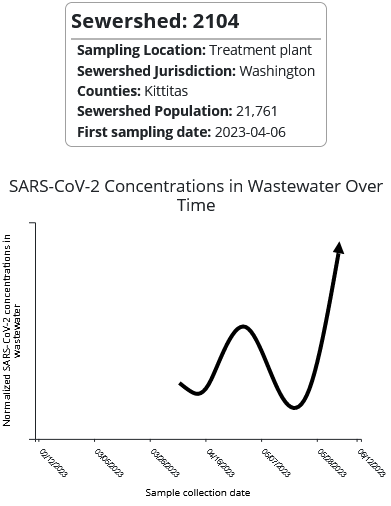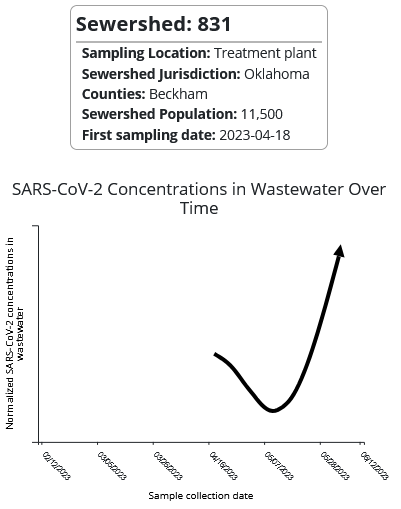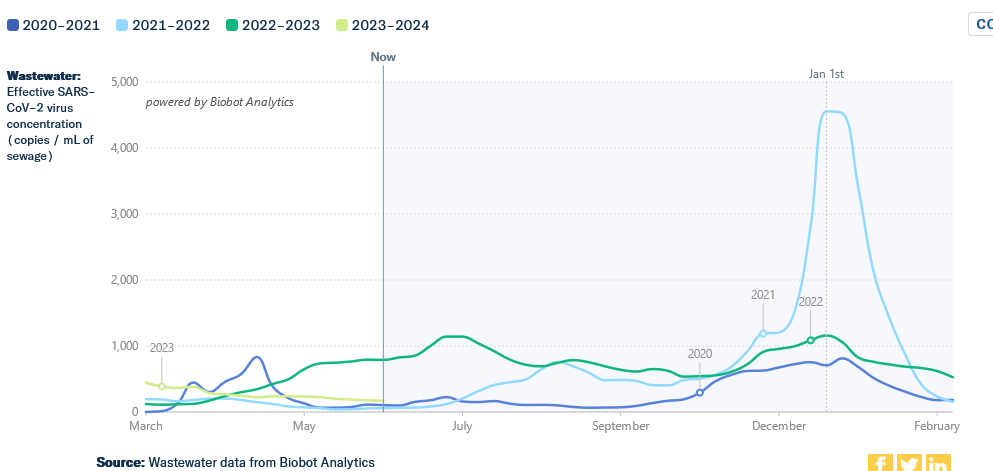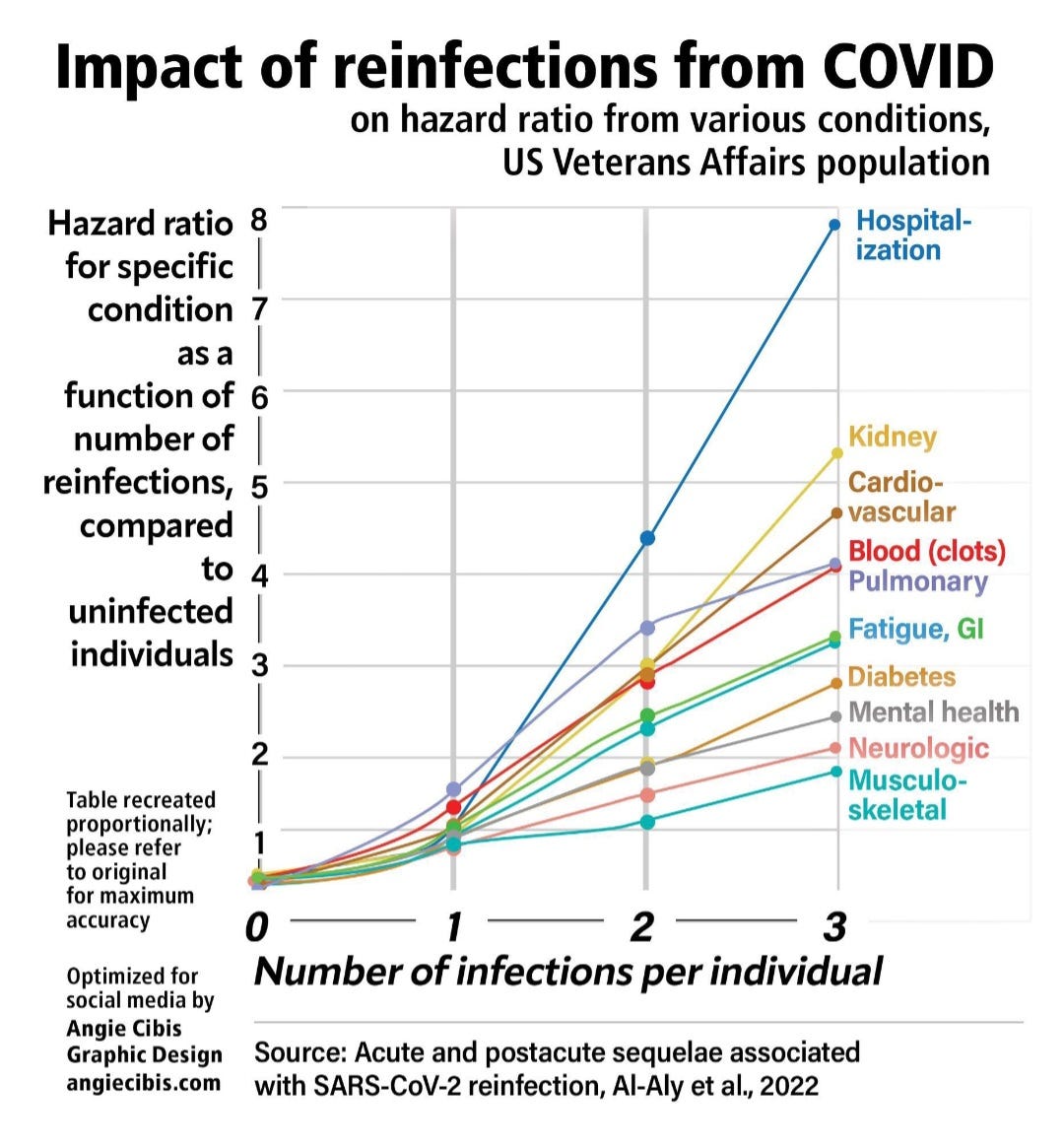COVID Update June 22, 2023 : Wastewater Prevalence Higher than 2020 and 2021 but Lower than 2022. See where it is increasing.
United States, United Kingdom and Australia updates
COVID has been relatively stable in most of the U.S. but there are some areas that are seeing an increase in the wastewater prevalence. The U.S. wastewater is showing a higher prevalence in 2023 (light green) than in both 2020 and 2021. Thankfully the numbers are much lower than 2022 (darker green) despite the end of the mitigation measures. We can see this on the year over year graph, below, by Biobot Analytics.
While most of the U.S. is enjoying a reprieve from the higher prevalence, there are a few places seeing an increase in the wastewater, like San Diego County, CA and Dallas County, TX. We are only sampling a tiny fraction of the sewersheds so we are largely flying blind in most of the country but none the less these data provide valuable insight into the ongoing situation.


The two graphs above are from Biobot and the graphs below are from the CDC data tracker. Honolulu, Hawaii has a sewershed population of 700,000 so this is a better example of a widespread increase vs a smaller sewershed population that may be more influenced by a possible recent super spreader event. In other words, the smaller sewershed population isn’t as reliable an indicator of a regional increase as the much larger sewershed population.




All of the variants circulating are extremely immune evasive. This means that people will have less symptoms initially which makes diagnosing harder and testing less likely. It is easy to believe that this means the virus is less dangerous and not impacting as many people however this isn’t true with COVID. The better it gets at evading the immune system, the more likely it is that people will end up with persistent infections and long term health issues.
“The data paints a concerning picture: approximately 38,390,183 adults in the United States are currently grappling with Long COVID symptoms that extend beyond the three-month mark.”
Insights on Long COVID, the Economic Impact to Households, and how Reinfections are Increasing Risks.
Here we look at some more insights from the ongoing U.S. Census Bureau survey. They have been collecting data on a range of ways in which people’s lives have been impacted by the pandemic. The Household Pulse Survey shows that over the different weeks of the survey, sorting the states by the lowest percentage to the highest percentage of people reportin…
This decrease in symptoms is also being seen in the U.K. The Zoe Health Study has been tracking people reporting symptoms through the Zoe App. Every year since COVID began, new cases increase from early June through around July 20th when schools close for the summer break. As of June 19, 2023, Zoe estimates that 743,459 are experiencing symptoms, compared to 1,476,882 people with symptoms on June 19, 2022. Over 743,000 are still experiencing symptoms with a very good chance that over 2 million are currently infected when considering asymptomatic infections. This should be extremely concerning when considering how dangerous mild and asymptomatic infections can be.
The large study by the U.S. Veterans Affairs department, found each infection increases risks. Reinfection increased the risk of diabetes, fatigue, kidney problems, and mental health disorders, along with musculoskeletal, neurological and vascular dysfunction. The risk increased whether vaccinated or not.
It appears that most people are having a strong T-cell response and that is compensating for the antibody evasion but as we have discussed plenty of times in the past, depending on T-cells is not a good idea. Even if we avoid a persistent infection, every infection is accelerating epigenetic aging. Increasing our age at the cellular level, shortening lifespans.
Australia looks to be on the backside of a COVID surge with hospitalizations declining the past couple of weeks. Looking at cases doesn’t show us anything anymore, and looking at hospitalizations isn’t much better due to the lack of testing and reporting but we can still get an idea of what’s unfolding. We have to keep in mind that asymptomatic or mildly symptomatic infections are occurring more often and that these infections still have the potential to cause a lot of damage in both the short and long term.
Deaths continue to climb in Australia but that should peak soon and start declining following hospitalizations. The older adults are consistently dying at much larger percentages but it is killing people of all ages and millions more are being impacted by Long COVID as the number of reinfections increase and variants become more and more immune evasive and suppressive.
As tempting as it is to believe that things are much better, the science tells us that it is more insidious than ever. Don't let your guard down because being next to the wrong person, at the wrong time, and inhaling a large viral load can become a very serious problem that is nearly impossible to get rid of once established. Tens of thousands, if not hundreds of thousands, have been suffering with Long COVID for over 3 years. We must work Together Against COVID Transmission.
Let us know what you're seeing or experiencing where you are or any other insights you may have.












Hi TACT...
Good to hear from you again...quite difficult to get reliable information these days.
Below is an interesting posting from the Bird site that you might find intriguing since you had previously advocated for better rapid antigen testing.
https://twitter.com/RPLerias/status/1671306392932589568